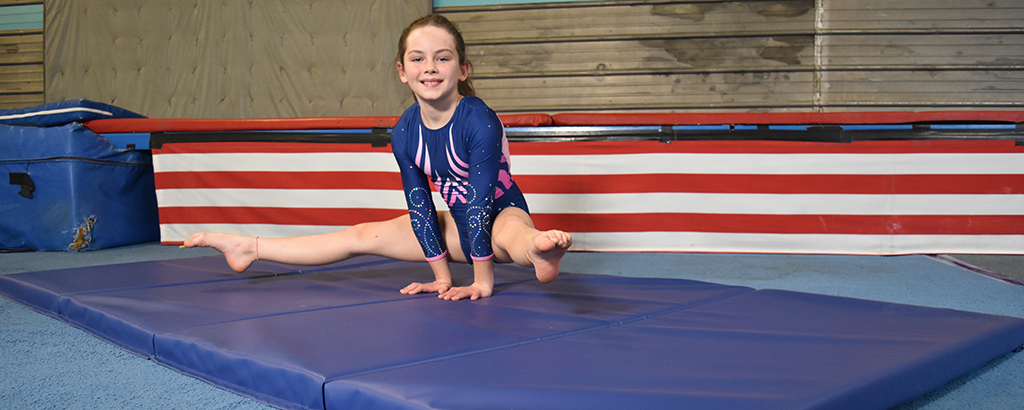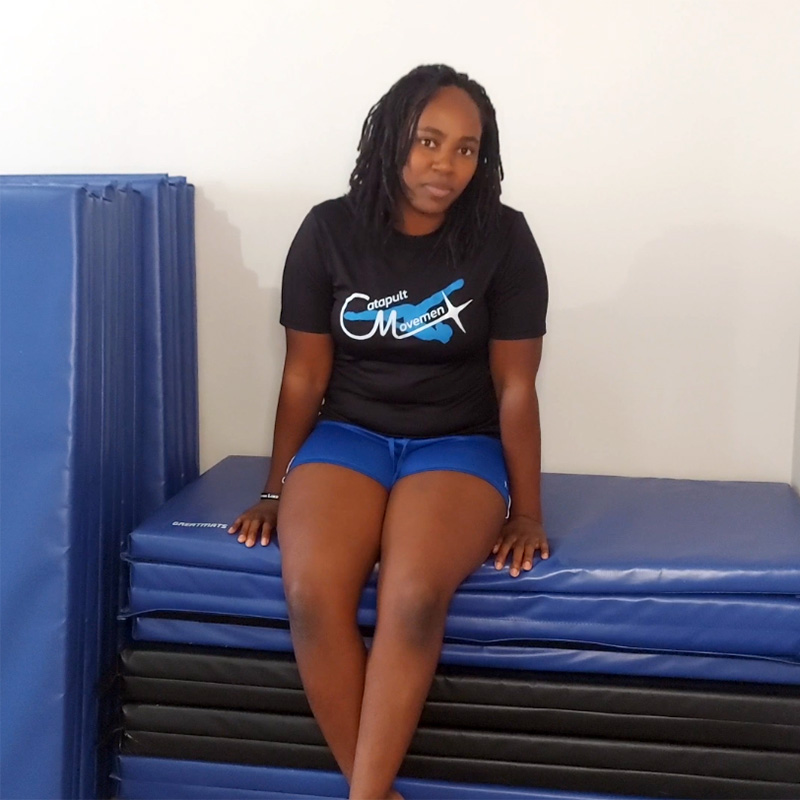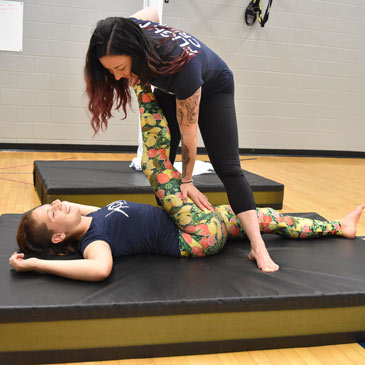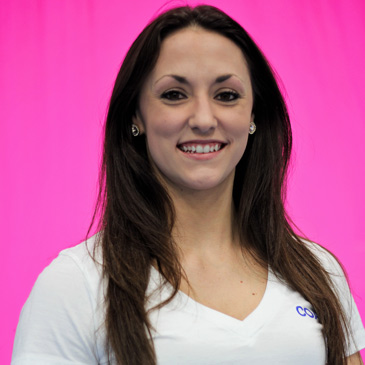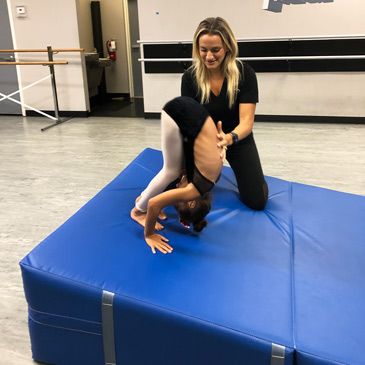Gymnastics Mats Customer Stories
Gymnastics Mats Guide
Gymnastic Flooring Blogs, Videos and Testimonials
Take advantage of years of gymnastics mats knowledge in this buyers guide, where you'll find instructional and informational blogs and videos as well as customer profiles.
Gymnastic Flooring Blogs, Videos and Testimonials
Gymnasts will learn many different skills as they advance in the sport. And those skills increase in difficulty as the athletes move forward. To keep the gymnasts safe, the right padding and gymnastics mats are a necessity.
Pads keep the joints of the gymnasts safe as they repeat moves during practice. Proper padding reduces the chances of repetitive stress injuries in knees, ankles, and shoulders.
Gymnastics mats also have padding that protects the athlete if he or she falls. Gymnasts could fall from an apparatus or stumble during a tumbling run, so having the right padding in the floor is vital in a practice area. Specific shapes and thicknesses of pads are available to match the use cases you have.
Folding mats. When you want cushioned gymnastics mats that are easy to store between uses, a foldable design is desirable. The folding mat typically consists of four or five panels, all connected by a vinyl cover. Each panel consists of a soft yet firm foam covered in vinyl, and the panels fold onto each other.
With a folding mat that measures 5x10 feet with five panels, the individual panels each measure roughly 5x2 feet. So when you fold it for storage, it takes up a lot less storage area than when laid out flat.
As an added benefit of this style of versatile mat, it can provide extra cushioning for the gymnast to land after attempting a skill. Just fold the mat so some or all the panels are stacked. Now you’ve created extra padding in a smaller coverage area.
Crash mats. A crash mat carries an extremely thick panel of foam inside. Some crash mats will measure as thick as 12 or 18 inches, meaning some people call them fluffy mats. Keep in mind fluffy mats should not be used alone as they are made off a very ''fluffy'' material that compresses quickly. These mats should be used over other mats to provide proper safety.
If you're looking for a mat to use on it's own as a crash pad, gymnastics safety mats are the go-to option. They too are quite thick, but offer greater resistance when a person falls on them.
This high level of padding is perfect for helping gymnasts land safely when they are practicing dismounts from the bar or beam. Some studios use a crash mat for safer skill development during tumble practice too. Should the gymnast land awkwardly on the back or knees, the extra padding softens the blow.
Because the padding inside crash gymnastics mats is not designed for direct foot traffic, these mats often are encased in a denim or vinyl cover with a zipper.
Competition landing mats. When you want to deliver the highest quality in a mat, stick with a competition style mat.
The competition mat will stand up to repeated use, delivering shock absorption needed for difficult skills. Competition mats are available in multiple coverage sizes and thicknesses.
Often times, the competition mat has multiple layers of foam inside, creating the most desirable combination of stability, durability, and cushioning. You don’t want an unstable mat causing the gymnast to stumble as he or she lands.
This type of padding will often use a durable vinyl or carpet top to give the gymnast the traction needed for running and jumping without slipping.
Octagon mats. An octagon mat has an eight-sided shape that approximates a rounded configuration. When you want to begin practicing walkovers and back handsprings, an octagon shaped mat is the best choice.
The shape of this pad allows the gymnast to rest his or her body weight on it. The athlete then can set up the proper hand and foot position, while the coach helps with completion of the skill. The coach can even roll the mat slightly forward or backward to help the gymnast shift his or her body weight properly.
The benefit of the octagon mat is that the gymnast can learn the right technique without tiring too quickly from supporting his or her weight.
Some training facilities will use these mats for agility training, as gymnasts can jump over them safely. If the gymnast trips and falls on the mat, it provides a nice level of cushioning.
Wedge mats. A wedge mat is another important style of mat to have in a gymnastics studio. These gymnastics mats, also called cheese mats, have an incline to them.
For young gymnasts practicing somersaults or cartwheels, the slant in the mat means gravity helps the gymnast complete the skill easier than if he or she is practicing on a flat floor.
Should you have two wedge mats, you can stack them on top of each other to create a greater level of incline.
Gymnastics mats buying guide. Finding high quality gymnastics mats that you can buy to fit in any budget is easier than you may think. Count on a trusted supplier to provide an inexpensive price for mat options, while still delivering durable materials that will keep gymnasts safe. Understand that gymnastics mats are not fail-proof, and proper technique and coaching are equally important in avoiding injuries.
When you need extra information to find just the right mat and pad for use at home or at the studio, click any of the links in our guide. You’ll find customer testimonials, product reviews, informational videos, and usage ideas to help with your purchase decision.
Pads keep the joints of the gymnasts safe as they repeat moves during practice. Proper padding reduces the chances of repetitive stress injuries in knees, ankles, and shoulders.
Gymnastics mats also have padding that protects the athlete if he or she falls. Gymnasts could fall from an apparatus or stumble during a tumbling run, so having the right padding in the floor is vital in a practice area. Specific shapes and thicknesses of pads are available to match the use cases you have.
Folding mats. When you want cushioned gymnastics mats that are easy to store between uses, a foldable design is desirable. The folding mat typically consists of four or five panels, all connected by a vinyl cover. Each panel consists of a soft yet firm foam covered in vinyl, and the panels fold onto each other.
With a folding mat that measures 5x10 feet with five panels, the individual panels each measure roughly 5x2 feet. So when you fold it for storage, it takes up a lot less storage area than when laid out flat.
As an added benefit of this style of versatile mat, it can provide extra cushioning for the gymnast to land after attempting a skill. Just fold the mat so some or all the panels are stacked. Now you’ve created extra padding in a smaller coverage area.
Crash mats. A crash mat carries an extremely thick panel of foam inside. Some crash mats will measure as thick as 12 or 18 inches, meaning some people call them fluffy mats. Keep in mind fluffy mats should not be used alone as they are made off a very ''fluffy'' material that compresses quickly. These mats should be used over other mats to provide proper safety.
If you're looking for a mat to use on it's own as a crash pad, gymnastics safety mats are the go-to option. They too are quite thick, but offer greater resistance when a person falls on them.
This high level of padding is perfect for helping gymnasts land safely when they are practicing dismounts from the bar or beam. Some studios use a crash mat for safer skill development during tumble practice too. Should the gymnast land awkwardly on the back or knees, the extra padding softens the blow.
Because the padding inside crash gymnastics mats is not designed for direct foot traffic, these mats often are encased in a denim or vinyl cover with a zipper.
Competition landing mats. When you want to deliver the highest quality in a mat, stick with a competition style mat.
The competition mat will stand up to repeated use, delivering shock absorption needed for difficult skills. Competition mats are available in multiple coverage sizes and thicknesses.
Often times, the competition mat has multiple layers of foam inside, creating the most desirable combination of stability, durability, and cushioning. You don’t want an unstable mat causing the gymnast to stumble as he or she lands.
This type of padding will often use a durable vinyl or carpet top to give the gymnast the traction needed for running and jumping without slipping.
Octagon mats. An octagon mat has an eight-sided shape that approximates a rounded configuration. When you want to begin practicing walkovers and back handsprings, an octagon shaped mat is the best choice.
The shape of this pad allows the gymnast to rest his or her body weight on it. The athlete then can set up the proper hand and foot position, while the coach helps with completion of the skill. The coach can even roll the mat slightly forward or backward to help the gymnast shift his or her body weight properly.
The benefit of the octagon mat is that the gymnast can learn the right technique without tiring too quickly from supporting his or her weight.
Some training facilities will use these mats for agility training, as gymnasts can jump over them safely. If the gymnast trips and falls on the mat, it provides a nice level of cushioning.
Wedge mats. A wedge mat is another important style of mat to have in a gymnastics studio. These gymnastics mats, also called cheese mats, have an incline to them.
For young gymnasts practicing somersaults or cartwheels, the slant in the mat means gravity helps the gymnast complete the skill easier than if he or she is practicing on a flat floor.
Should you have two wedge mats, you can stack them on top of each other to create a greater level of incline.
Gymnastics mats buying guide. Finding high quality gymnastics mats that you can buy to fit in any budget is easier than you may think. Count on a trusted supplier to provide an inexpensive price for mat options, while still delivering durable materials that will keep gymnasts safe. Understand that gymnastics mats are not fail-proof, and proper technique and coaching are equally important in avoiding injuries.
When you need extra information to find just the right mat and pad for use at home or at the studio, click any of the links in our guide. You’ll find customer testimonials, product reviews, informational videos, and usage ideas to help with your purchase decision.
